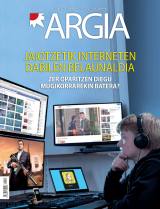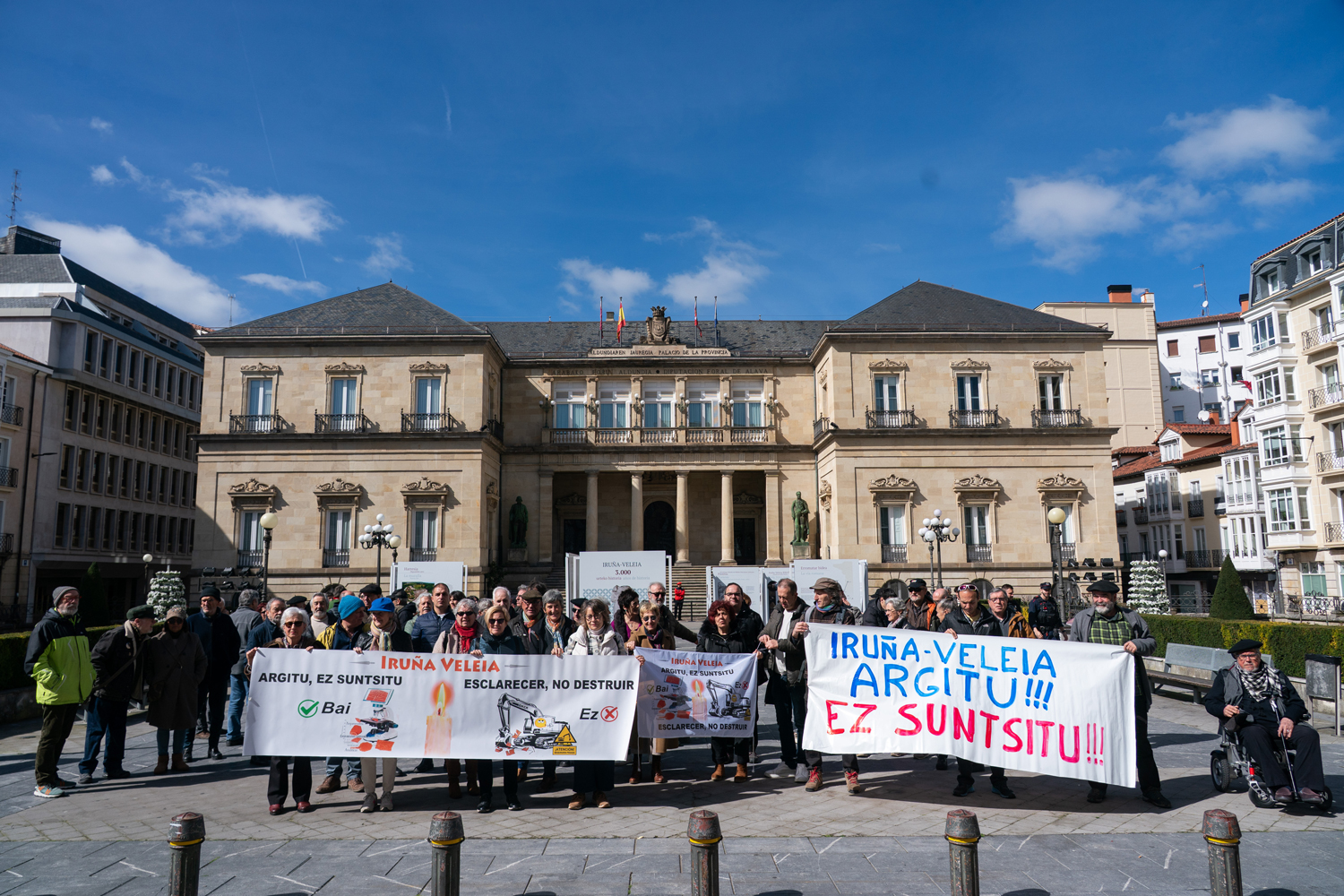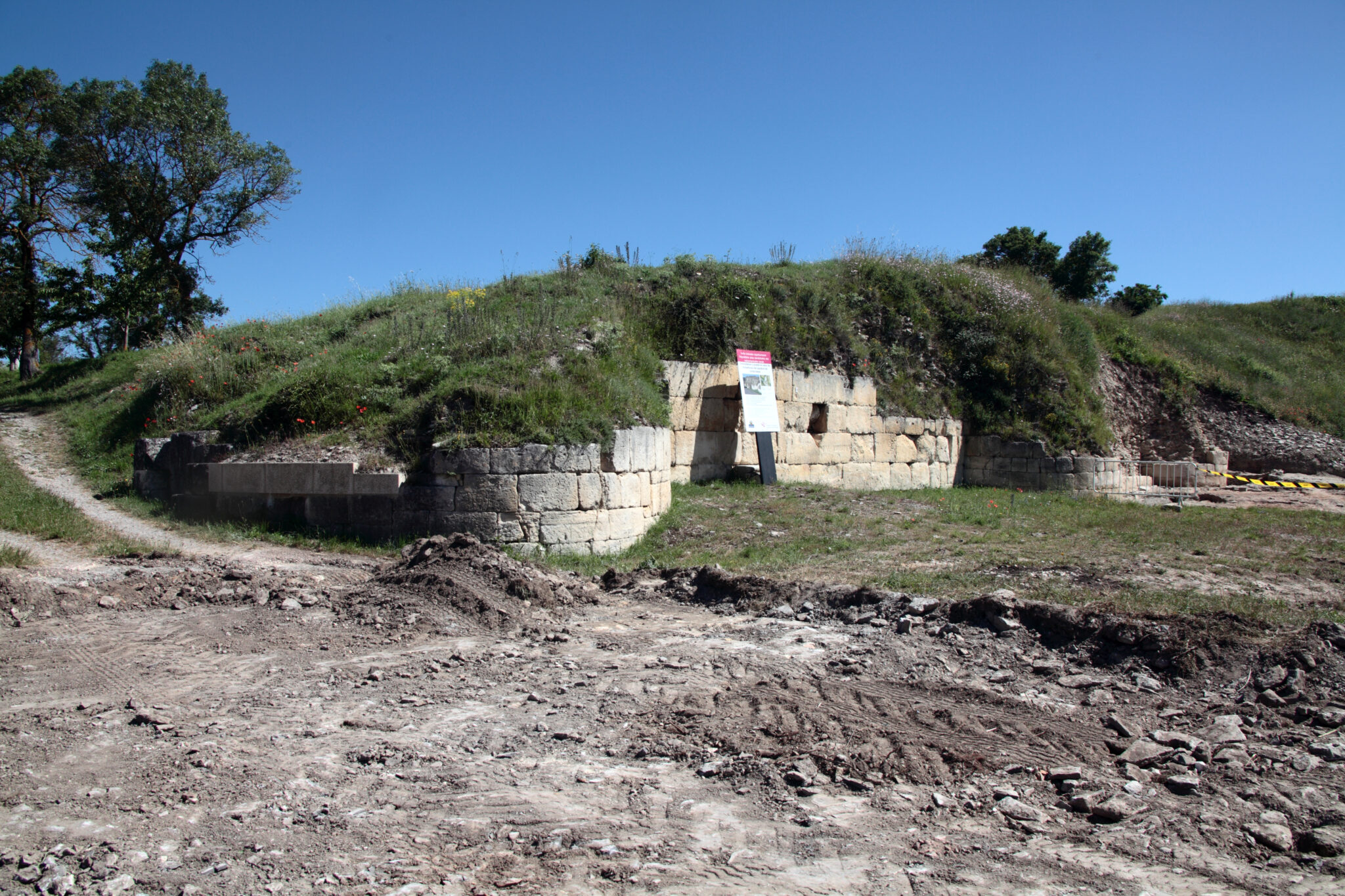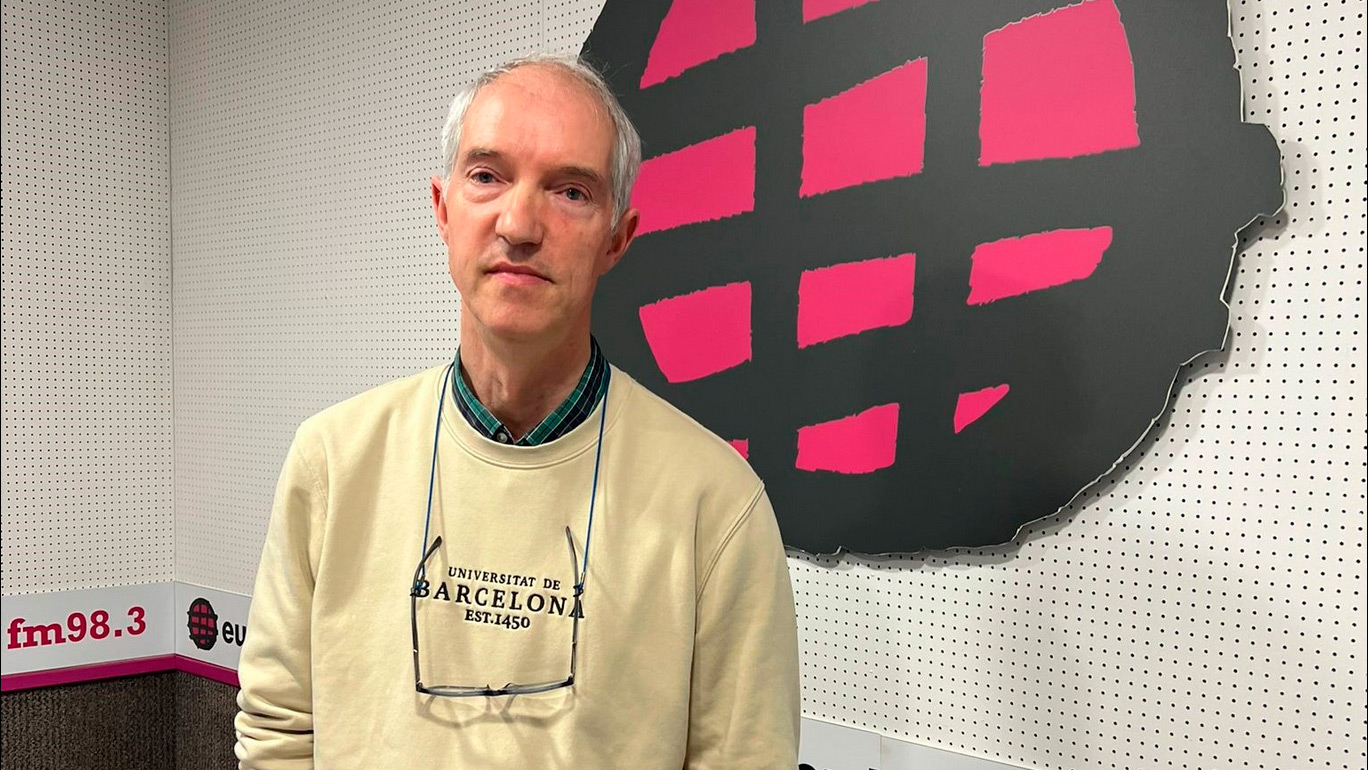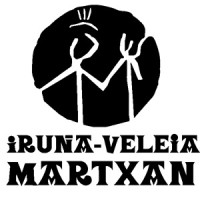"We have the feeling, though hidden, that the tests are made and that they have not found falsehood."
- There is always the municipality of Iruña de Oca in the center of Álava. There is always the Roman site of Iruña–Veleia. There are the oysters or grafts that have always been found to be true, false. The pedestrian wants to know the truth…
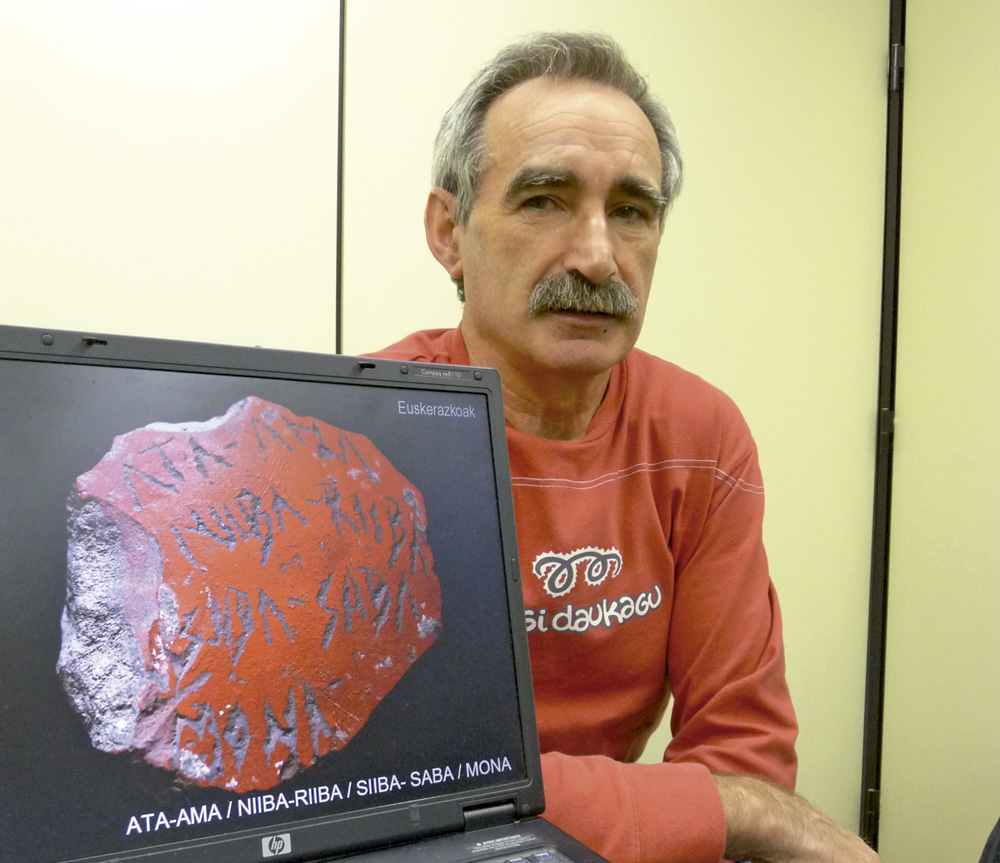
What is the question, the case, the “affair” or the rebel knot?
Eight years later, last June, by law, the deadline for examining the case was over. Cases that had been open for more than five years had to be closed. This one, which had been seven years old, was extended for another year. [Site Director] Attorney Eliseo Gil filed the appeal and has still received a notification from the court stating that they accept the appeal, that there was no need to extend the instruction, that there was no justification, that a decision had to be made. The communiqué claimed, however, that the decision had not been taken at the request of lawyer Eliseo Gil, but rather by an error of the prosecutor ' s office, which had requested the extension after the deadline. Surreal. I would like to say that we will soon be able to get a resolution, or to know when. It's desperate. What we say today may lose value tomorrow.
Where is the knot?
The case has been under investigation for more than eight years and there is still no charge on the part of the prosecutor. The police report has already been carried out – we have read it – and there is no sign of crime. No trace. The extension of the investigation is absolutely exceptional – it is the oldest cause we have in the Basque Country – and that, surely, because the judge and the prosecutor do not know what to do. The same judgment can turn against the accusers [Diputación Foral de Álava], many old rags can come to light... But if there is no trial, they will remain ridiculous, after eight years declaring falsehood.
And what is the knot of the authenticity of the oysters?
There are very different views on this. On the one hand, at the initiative of the Diputación de Álava, the committee composed mostly of professors from the UPV/EHU considered that the oysters were false. On the other hand, in these years many powerful scientists, many foreigners, have said the opposite, that is, that oysters look like they are true. These scientists have produced 20 reports. Most do not have affective links with the Basque Country, have no pressure to act in one way or another, and say that oysters appear to be true. Edward Harris, Van den Driessche, Rodriguez Colmenero, Luis Silgo, Ulrike Fritz…
“Since 2008, proponents of falsehood have not written anything except to confuse the margins of the
Internet, using false names or aliases.”
Along with them, however, we have experts who give false texts in Euskera that appear on the oysters and graphites. How many heads are there?
The word of one against the word of another. But there's the reports, there's the photographs, there's the well-documented site -- the photographs of the oysters, the transcripts, the comments -- and the people have stayed in the field. The media also, at first, paid a lot of attention to the finding. They spoke in favour, then against, in an uncritical manner. Then it was a very strong movement that defended the authenticity of the oysters: In 2009 I published the Basque graphite of Iruña Veleia, the Labortane philologist Héctor Iglesias has written a 400-page report in French…
Veleia afera (2010) by Alberto Barandiaran.
Yes. And people don't have to believe one or the other. People just want the truth, and today these things can be solved by physical evidence. In 2009, for example, both the company Lurmen and SOS Iruña Veleia requested that several houses specialising in European archaeometry study graphites – the budget presented is not very expensive – but the judge did not accept it and the issue is in their hands. We believe that this matter could be resolved within a week, and in part even without going to Europe.
It is not, therefore, an incidence of philologists.
Not from philologists, not archaeologists -- it's the time of specialized laboratories.
You fight the scientific community.
Yes and no. What is your scientific community? Joakin Gorrotxategi, Joseba Lakarra and Isabel Velázquez? Just them? Apart from the members of the Commission, almost no one has aligned himself with the falsehood in the public sphere. Who has been wet in this matter for the last eight years? Do you realize that ten reports were written – six in favor of falsehood – but none of them have been published? Why it has not been published, university professors are eager to publish their articles in indexed and specialized journals! No one has ever published a word. Since 2008, proponents of falsehood have not written anything except to confuse the margins of the Internet, using false names or aliases.
What will we gain, what will we lose when the judge makes the decision, whatever it is?
I'm not a guess, I can't say what the judge will decide. It would be logical for the case to be filed; it is up to the judge to decide whether or not there has been a crime, not whether the oysters are real or false. If there is no evidence of crime, it would be logical to file the case, release the pieces by the Council of Álava – which has the property and property of its heritage, although Lurmen has intellectual property, because it is the one who found them – and make them available to specialized laboratories outside the Spanish State. In London, Belgium, Germany -- they're ready, we've had contacts.
"The salsa has been great, many interests have accumulated, different interests, which have narrowed the knot"
You don't seem to be asking for heaven.
The only thing we ask is logical. We have the feeling that the tests are done, even in a hidden way, and that they have not found any evidence of falsehood. Among the irregularities that have occurred, one was that on 19 November 2008, date E, on the date of adoption of the agreement, a single report was submitted: [Joaquín] Gorrotxategi. The remaining nine reports were not delivered, and some were probably not even written. These reports came the next day, or a week, or a month. This was the first irregularity.
What do you mean?
The resolution states that “the scientists made the decision unanimously”, but it is not true because there was already a single report delivered. Another great irregularity, that of the court, was that the pieces should be made available to the person who filed the complaint, that is to say the representative. That's amazing! They've had the oysters under their care, they've been used by the graphologists and the hands they like, not knowing what's been done, not knowing what's been done.
He has once denounced the neglect of the cultural elite of our country.
Poor performance of the Basque political and cultural community. Despite the beliefs, they may not want to go deeper into anything and, in a moment, impose censorship on those who think otherwise. This censorship has also been palpable in the media throughout the country. We have done many things, SOS Iruña Veleia, Origen del Euskera, Martin Ttipia… Concentrations, congresses, guided tours, talks... of which almost nothing has appeared in the media. Articles of opinion submitted by us. There is a medium that has not written the word Iruña Veleia on paper for four or five years. And I'm not going to say his name! Ja, ja…
Censorship?
If it's not censorship, is it Latin damnatio memoriae? What is that conversion of Iruña Veleia into taboo? I don't know if the word is a censorship or an informative blackout, but that's there.
What else?
We are in the hands of the judge, we can do nothing but wait, apart from making noise, of course. If the case is filed, the force will have to be put in place to free all these pieces once and for all and to give them the right way. If there is judgment, there will have to be force everywhere to ensure that the trial is fair.
Why has this happened?
According to our reading from SOS Iruña–Veleia, Basque philologists were the first to oppose the truthfulness of the oysters. Why? Because the Basque who appears in the graffiti and who they represent two thousand years ago do not coincide in some points. On the other hand, the UPV/EHU already wanted to appropriate the site, with impressive jealousy for the private company Lurmen. More reasons? The pressure from the lobby of the late Euskaldunization, saying that at that time in Álava there was no talk of Euskera, which had to be forcibly false… The Vatican also seems to have shook its nose. Finally, we have the intervention and decisions of the politicians. When that decision was taken, the MP was the PNV, the EA was the Member of Culture, who proposed and signed the decision; now it is EH Bildu, and so the whole political arc was blocked; this could be one of the keys to explaining the silence. The salsa has been great, many interests have accumulated, different interests, which have narrowed the knot.
“Badira berrogei bat grafito, hezurrean eginak. Horiek, karbono-14ren bitartez datatu daitezke. Izan litezke hezurrak zaharrak, eta berriak idazkunak, baina hezurretan adituak lehenengo begiratuan, edo bigarrenean, igarriko dio idazkun horiek zaharrak edo berriak diren. Duela bi mila urteko hezurrean era batera grabatzen da, edo hobeto esan, ezin da grabatu, zeren ez dauka kolagenorik eta hautsi egingo da. Besterik da orain dela hilabeteko hezurrean. Hor daude, beraz, karbono-14a, batetik, eta adituaren begia eta tresneria bestetik. Horretaz ere egina dago txostena, Ramon Baxarias paleo-osteologo katalanarena. Euskal Herrian ere baditugu hezurretan adituak, eta agian bustitzeko garaia heldu zaio baten bati”.
Otsailean bost urte bete dira Iruña-Veleiako epaiketatik, baina oraindik hainbat pasarte ezezagunak dira.
11 urteko gurutze-bidea. Arabako Foru Aldundiak (AFA) kereila jarri zuenetik epaiketa burutzera 11 urte luze pasa ziren. Luzatzen den justizia ez dela justizia, dio... [+]
Martxoaren 30erako Iruña-Veleia martxan, SOS Iruña-Veleia eta Euskeraren jatorria elkarteek manifestaziora deitu dute, Aski da! Argitu, ez suntsitu lelopean. Azken bi urteetan "hondeatzaileak sistematikoki eremu arkeologiko oso aberatsak suntsitzeko modu... [+]
Urriaren 26an Iruña-Veleia Argitu, ez suntsitu jardunaldian Zenbat esku daude Iruña-Veleian aurkitutako ostraken testuetan? ponentzia aurkeztu zuen Joseba Lizeagak
“It’s been 18 years since some 400 graffiti appeared on the excavation, 16 years since he was expelled from the excavation camp of Lurmen without scientific evidence and 4 years since the trial was held without clarifying the subject, we can say that we continue to... [+]
In June 18 years ago we started to get to know the paintings of Iruña Veleia. Good news for the Basques.
But the current situation is not so satisfactory. On the one hand, the Provincial Council of Álava (DFA) says that all graphites are false, and that those who think... [+]
As we have known, Joaquín Gorrochategui has been awarded the Euskadi Research Award 2023. SOS Asturias-Veleia hereby expresses its disagreement and discomfort. In our opinion, the deplorable role played by the professor in the Asturias-Veleia case leaves out the merits he can... [+]
When we join archeology and site, an image of several people sitting on the ground will come to us, raising and cleaning the ground with palettes or brushes, welcoming the surrounding spaces with rope, some wheelbarrow and sieve, meter… We have seen it in Irulegi and Iruña... [+]
At the end of the year it is usual to review last year. I want to do something like this with the 4,500 characters offered by ARGIA on Iruña Veleia (hereinafter I-V). From time to time I have inserted several writings and videos into quotation marks to check them online with... [+]
The trial took place in Vitoria from 3 to 19 February 2020. Days before P.A. The journalist sent Berria the sense article Sugetzarra. It ended as follows:
"You have to see what makes judgment. In any case, it is sad that everything is then turned over; disappointing, the games... [+]
Because you have fulfilled newspapers, magazines, televisions, radios and social networks ‘Sorioneku’, and all in your honor. The graffiti by Iruña Veleia was not so lucky.
He found me ‘Sorioneku’ L.M. excavator. Those of Iruña Veleia were dismissed as... [+]
As you know, Eliseo Gil Zubilwaukee, former director of the archaeological site of Iruña Veleia, was convicted of falsifying graffiti by a criminal court in Vitoria-Gasteiz in 2020. The defendant was sentenced to two years and three months in prison and several sentences of up... [+]
In February the human skeleton of 12,000 years found in a cave of Loizu (Merindad de Sangüesa) was presented; this month the mammoth bones of 30,000 years found in the cave of Isturitze, in Donamarti (Baja Navarra).
This newspaper has provided excellent information on two... [+]
Yesterday the Hearing’s response to the Iruña–Veleia ruling by Lurmen was known. As this is a state matter, and as in all other Spanish State matters, they have reassured the administration, against citizenship; that is, they have not even taken into account Lurmen’s... [+]









